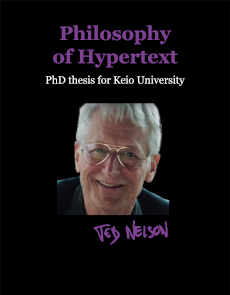Building trust in media
CiteIt is developing new digital tools that help combat misinformation and selective quotations. These tools show the context surrounding the quoted media in order to build trust and understanding.
CiteIt is developing new digital tools that help combat misinformation and selective quotations. These tools show the context surrounding the quoted media in order to build trust and understanding.
Often when I’m reading a story in print, I come across a quote that makes me wonder: What was said in the sentences preceding or following the quote? In other words: What is the Context? Is this quote cherry-picked and can I really get a full sense for what happened from just the quoted selection?
CiteIt.net is the name I chose for a web service that allows writers to augment their writing with greater context about the quotations they make. The concept behind CiteIt.net is part of the tradition that started with footnotes, became hypercharged with hypertext links, and now has evolved to enable the words of the original sources to flow into the citing document, without requiring the reader to interrupt their reading experience by leaving the original document.
CiteIt.net was inspired by the work of Ted Nelson — who coined the term “hypertext” in 1962 and had the vision for a universal hypertext network, long before Bill Gates and Steve Jobs had even assembled their first personal computers.
 While writing a review of Ted Nelson’s 2002 Ph.D. thesis, I was inspired to develop a way to write in a way more similar to what Nelson advocates. Ted’s design — Xanadu — features parallel texts that provide the full context of their sources. My design is a crude semblance of Xanadu, displaying only one pane of text in which the text surrounding a citation is “injected”. Because I do not have the technical ability to implement Ted’s vision and so much existing writing is available on the web as Html, I thought I could pursue Ted’s vision best by creating a quick-and-dirty extension to Html that would allow writers to start to create a collection of citation data. There is a saying from the 1989 movie “Field of Dreams —
While writing a review of Ted Nelson’s 2002 Ph.D. thesis, I was inspired to develop a way to write in a way more similar to what Nelson advocates. Ted’s design — Xanadu — features parallel texts that provide the full context of their sources. My design is a crude semblance of Xanadu, displaying only one pane of text in which the text surrounding a citation is “injected”. Because I do not have the technical ability to implement Ted’s vision and so much existing writing is available on the web as Html, I thought I could pursue Ted’s vision best by creating a quick-and-dirty extension to Html that would allow writers to start to create a collection of citation data. There is a saying from the 1989 movie “Field of Dreams — If you build it –
– he will come. My approach is to get started using a simplified implementation, as a foundation that attracts others to the task of building a better version of hypertext. As the system develops, and as authors get used to the concept of pulling their quote context from the original source, it is my hope that the compilation of a public data set of citation data will attract great programmers to gradually rebuild hypertext, replacing my current Html cludge with advanced front and backend features.

–Tim Langeman (home page)
Akron, PA (USA)
Can you locate the source of any quote
When did you begin CiteIt?
What source mediums can you cite?
Why is the context cut off mid-word?
What was Neotext?
The CiteIt.net web service looks up the context of a cited quote and saves the 500 characters of context from both "documents", along with the parallel quotes from each document.
This data is created when an author looks up citations within their own document.
If the author cites a YouTube video, the system looks up the YouTube Transcript and saves the 500 characters before and after the quote. as well as the time offsets of each transcript line.
The website uses Google Analytics to observe web traffic but the webservice does not collect user data.
CiteIt does not charge for this service and it is offered with no warranty.
Substack may be bundeled with other services and users assume the terms of bundeled services.